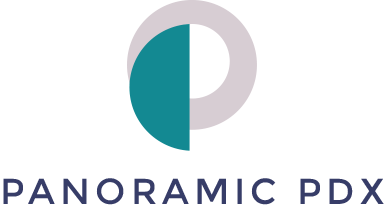
EMDR for Chronic Pain:
When the Body Remembers
When Pain Touches Everything
Chronic pain is so much more than a medical diagnosis. It can carry fear, overwhelm, grief, and the ache of experiences that never had a chance to be processed.
And it doesn’t stay in one part of your life—it has tentacles. It can reach into your relationships, your work, your ability to focus, your sleep, your sense of self. It can shape how you move through the world, how much you say yes to, how much you trust your body, how connected you feel to others. Even the simplest things—like planning ahead or feeling spontaneous—can start to feel like too much.
Pain can narrow a life. Therapy can help widen it again.
For many people, pain is also tangled up with the body’s memory of what it’s been through.
That might include an accident or injury.
It might include years of being dismissed by providers.
It might include the quiet, ongoing stress of living in a body that never quite feels safe.
EMDR (Eye Movement Desensitization and Reprocessing) is best known as a trauma therapy—but it’s also being used to help people living with chronic pain begin to untangle those deeper threads.
What exactly is EMDR?
At its core, EMDR helps the brain and body process unhealed experiences. Instead of re-telling your story over and over again, we work in short, focused phases—often using eye movements or tapping (called bilateral stimulation) to support the brain’s natural ability to connect the dots, release stored distress, and bring the nervous system into more balance.
EMDR is structured but flexible.
It’s powerful, but it doesn’t have to be overwhelming.
And it’s absolutely adaptable for people living with illness, fatigue, or pain.
Why does EMDR help with chronic pain?
Pain and trauma both live in the nervous system. Some pain lingers not because your body is broken—but because it hasn’t had a real chance to feel safe. EMDR can help gently access those stuck patterns—especially when your pain is tied to trauma, surgery, injury, or difficult medical experiences.
What might EMDR for chronic pain look like?
We might start with a memory—like the moment pain began, or the first time you were dismissed by a provider. Or we might begin with a belief that’s settled in your system:
“Pain means I’m doing something wrong.”
“I’m worthless.”
“I’m a burden.”
“No one believes me.”
“My body is broken.”
We’re not here to force a breakthrough.
We’re here to build safety—one moment at a time, with your body in the lead.
So… can EMDR make pain disappear?
EMDR isn’t a promise to cure pain—but for some people, it changes how pain is experienced.
When pain is linked to trauma—whether from an injury, surgery, or medical dismissal—the nervous system can stay stuck in protective overdrive. EMDR helps process those unhealed experiences, which can reduce pain intensity or shift how the brain and body interpret it.
Some people notice less physical pain. Others feel more calm, more clarity, or more space. Often, the fear and tension around the pain begin to soften. That’s healing. And that matters.
What if I decide EMDR isn’t for me?
EMDR is a tool—but it’s never the only one we might use in therapy. You have choice at every step. We pause when we need to. We check in often. And if EMDR doesn’t feel right for you, we pivot. Therapy isn’t about forcing a method—it’s about finding what helps you feel safe, supported, and more like yourself.
This is especially true for clients who experience physical pain like migraines or chronic headaches. If EMDR isn’t accessible on a given day, we shift to something gentler—something your system can hold.
I’m trained in a range of therapeutic approaches that can support chronic pain, trauma, anxiety, grief, and the many emotional layers of chronic pain and chronic illness. Depending on what you need, we might draw from:
Pain Reprocessing Therapy (PRT)
Acceptance and Commitment Therapy (ACT)
Cognitive Behavioral Therapy (CBT)
Compassion-Focused Therapy (CFT)
Motivational Interviewing (MI)
There’s no one-size-fits-all path. We shape the work together—gently, collaboratively, and in a way that honors both your symptoms and your story.
This work doesn’t require conviction. Just curiosity and the space to see what unfolds.


